Tczew 19-08-2024
Railway line No. 203 Tczew – Piła Główna – Kostrzyn.
Railway line No. 203 Tczew – Piła Główna – Kostrzyn is a 342.890 km long, double-track and single-track, non-electrified line. From Tczew it runs south-west to the western border of Poland. The line runs through the Pomeranian, Wielkopolskie and Lubuskie voivodeships. The maximum speed of the train is 120 km/h. The line has been laid out in long straight sections and if the line had a greater impact on the Polish economy, it would be possible to increase the speed to 200 km/h.
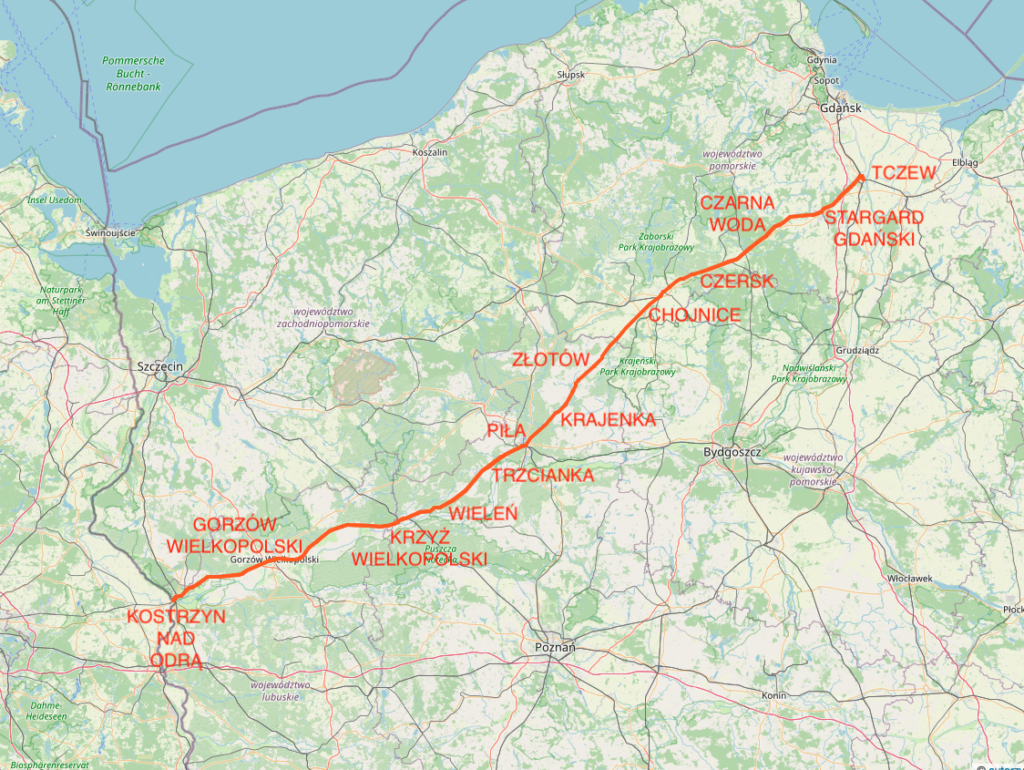
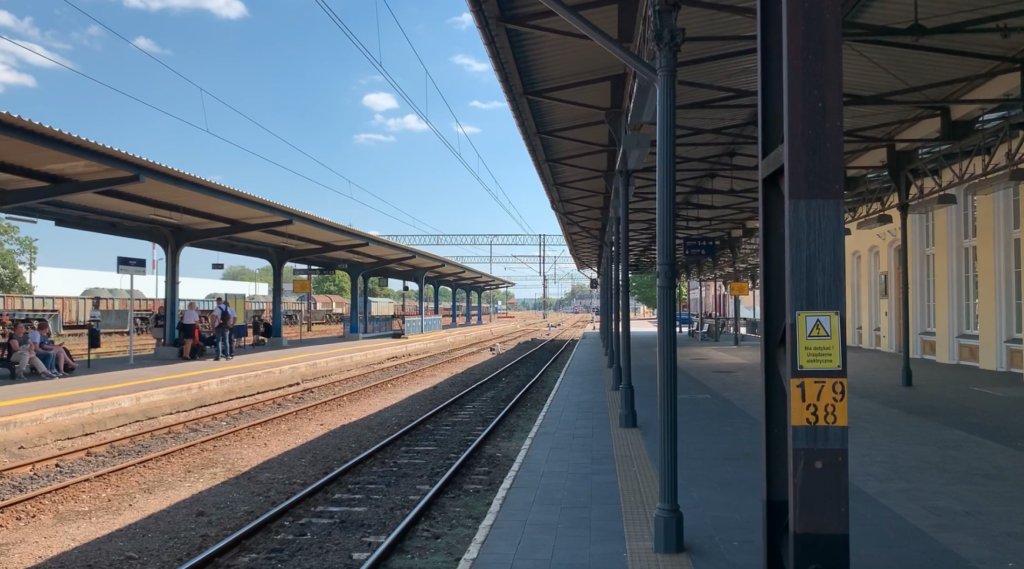
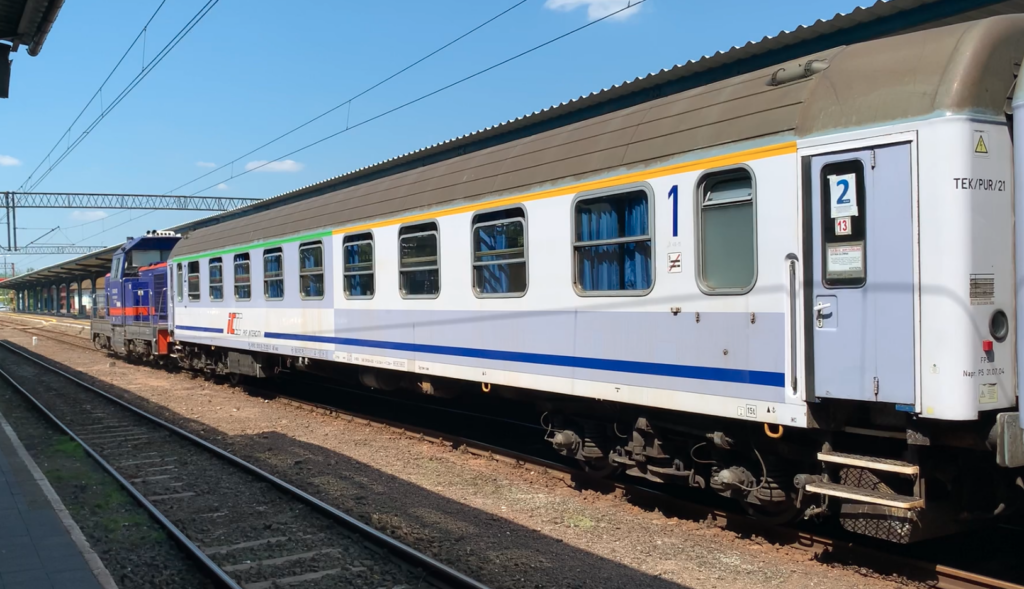
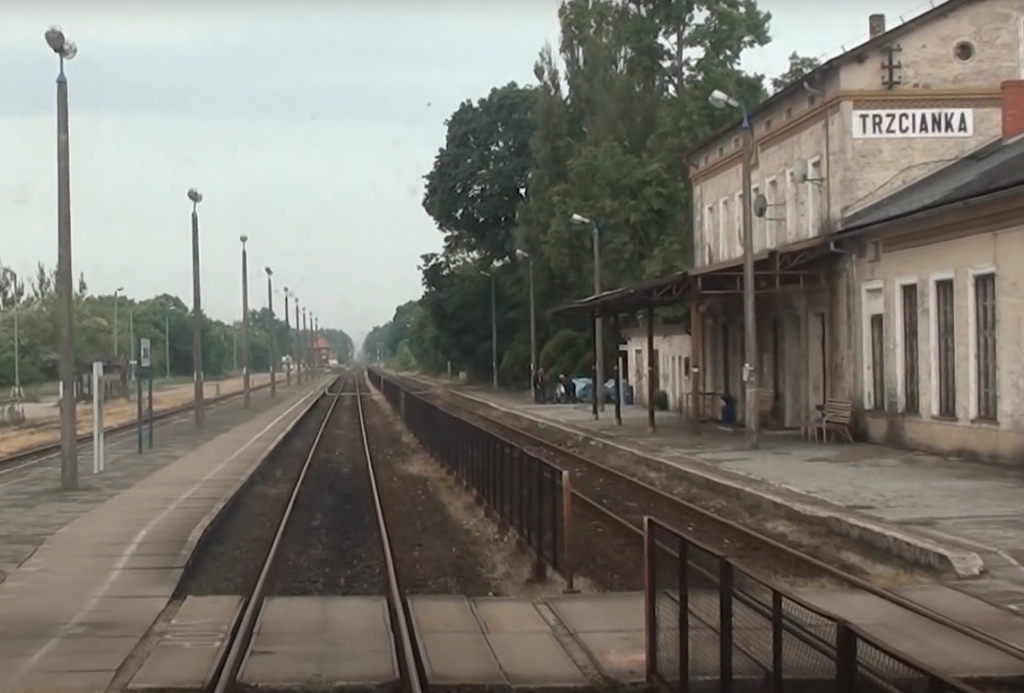
Railway line No. 203 is an example of Germanic-Muscovite friendship. To this day, Germans rent vintage trains and travel along the historic Ostbahn route. But let us remember that Germans are guilty of both world wars and lost both of them. As a result, they lost a lot of territory to the benefit of other nations. Besides, there is no Germanic nation, and even Germans do not have their own constitution. The law imposed by the Allies after World War II applies there. And let us remember that Germans have no respect for Poles and treat us in a contemptuous manner.
LK No. 203 was built in sections from 1846 to 1873 and was also put into operation in two sections; in 1851 and in 1873. The route was built during the period when the Republic of Poland was under partition. In 1920, the Tczew–Moszczenica Pomorska section was incorporated into PKP, and in 1945, the Człuchowskie–Kostrzyn section.
The concept of building a railway line was created in 1842, as part of the Prussian Eastern Railway – Ostbahn, and the first construction works began in 1846. In 1851, the Krzyż Wielkopolski–Piła section was put into operation. In the period 1871–1873, construction of the line on the Piła–Chojnice–Starogard Gdański–Tczew section was carried out. From 1888, the line was owned by the Prussian State Railways (Preußische Staatseisenbahnen). Until 1895, the Prussian Eastern Railway was managed from Bydgoszcz. In that year, three area directorates were established: Bydgoszcz, Gdańsk and Królewiec.
Since 2005, the modernization of line No. 203 has been ongoing. Tracks, switches, and rail traffic control systems have been replaced. Rail-road crossings, bridges, and culverts have been modernized. Automatic crossing signaling devices (SSP) have been installed. The train speed has been increased to 120 km/h. A major task was the renovation of the railway viaduct in Gorzów Wielkopolski and the Gorzów Wielkopolski station itself.
Currently (2024), the only passenger train that runs through the entire LK No. 203 is the InterCity train TLK 85110 “Bory Tucholskie” Gdynia Główna – Kostrzyn. Distance 393 km. The traction vehicle is a diesel locomotive SU4210. The travel time is about 6 h 20 minutes.
The exact course of LK No. 203.
Tczew 0.000 km. Tczew is a large railway junction. The line starts at Tczew station and takes a large curve to the left towards the south-east. The line passes over a viaduct over DK No. 91. The line passes under the Bydgoszcz – Gdańsk railway line. Malinowo 2.125 km. Tczew Suchostrzyki 3.620 km. The line passes DW No. 224 (Jagielońska Street) at a rail-road intersection. Rokitki Tczewskie 5.423 km, passenger stop. The line passes the A1 Motorway (E75, Amber Motorway) below. Swarożyn 12.796 km. The line runs along DK No. 22. Szpęgawsk 17.456 km, passenger stop. The line runs through the forest. Starogard Gdański 23.972 km. The viaduct DW No. 222 runs above the station. The line passes the Wierzyca River on a bridge called Dreimost – Nowa Wieś Rzeczna. Currently, the bridge is concrete and consists of three arches. The Wierzyca Hydroelectric Power Plant is 50 m away. Further on, the line crosses the former route to Stargard Gdański on a brick bridge. Piesienice 32.701 km, passenger stop. These are areas where the Germanic occupation of Polish Lands, which occurred in the period 1939–1945, brought almost exclusively death, widespread terror and destruction. Pinczyn 35.956 km. Zblewo 39.413 km. Here, the line passes DW No. 214 at a rail-road crossing. Bytonia 42.270 km, passenger stop. Kaliska 46.926 km. Kamienna Karczma 51.496 km, passenger stop. Czarna Woda 56.106 km. Here is the intersection with District Road No. 2701G (District Road No. 2701G Huta Kalna Commune border through Bartel- Kaliska. List of the District Road Authority in Starogard Gdański). The line runs over a railway bridge over the Wda River. Currently, the bridge is concrete, three-arch. The Ostbahn line crosses the single-track Polska Węglówka Międzywojennenna. Węglówka runs over the mountain. Łąg 59.878 km, passenger stop. Czersk 66.983 km, junction station. Forest areas begin. Gutowiec 74.693 km, passenger stop. Here, the trail changes from a double-track to a single-track trail. Rytel Wieś 80.768 km. The line runs over the Brda Canal. The bridge is brick, three-arch. And there is another bridge over the Brda River and over a local road. The bridge is concrete, four-arch. The line departs from DK No. 22. Rytel 84.126 km, station. The line passes agricultural areas. Krojanty 89.226 km, passenger stop.
Before Chojnice the line crosses the railway line from Lipusz, which passes over the mountain. The line runs under the road, Gdańska Street. The line passes over DW No. 240. Chojnice 96.227 km. Chojnice is a large junction station, the largest station without wires. Chojnice station is of the island type. At the station there is the Monument to the Murdered Railwaymen. The line runs over DK No. 22. The line crosses the railway line towards Szczecinek. The line passes DW No. 212 at a rail-road crossing. Moszczenica Pomorska 104.196 km. There are agricultural areas here. The line passes DK No. 25 at a rail-road intersection. Wierzchowo Człuchowskie 107.983 km, station. Bukowo Człuchowskie 115.082 km. Lipka Krajeńska 126.413 km. Here is the railway siding to Debrzno Airport. The line crosses DW No. 188 at a rail-road intersection. This road then runs along the railway line, on the southern side. Zakrzewo Złotowskie 138.280 km. The line runs under the DW No. 188 viaduct. Złotów 147.136 km. The line passes the Głomia River on a bridge and again on a two-arch stone-brick bridge passes the Głomia River. The line passes DW No. 190 at a rail-road intersection, Bydgoska Street. Krajenka 156.031 km. Dolnik 161.457 km, passenger stop. Skórka 167.299 km, passenger stop. The line passes DK No. 10/11 at a rail-road intersection. Piła Podlasie 176.040 km, passenger stop.
The city of Piła is a large railway junction. The line crosses the Gwda River. Piła Główna 179.542 km. The line is at Platform 5/6. From one track, the trail turns into two tracks. DW No. 180 runs above the station. The line passes under the truss bridge of the line towards Wałcz and Szczecinek. Powodowo Prefabet 183.297 km. Stobno 188.412 km. The line crosses the Łomnica River. DW No. 180 runs along the line on the southern side. Biała Pilska 197.390 km, passenger stop. The line runs under the DW No. 180 viaduct, Grunwaldzka Street. The line crosses the Trzcianka River. Trzcianka 202.073 km. Agricultural areas. Siedlisko Czarnkowskie 209.227 km. Forest areas begin. Here, at a rail-road intersection, the line passes DW No. 153. Biernatowo 214.014 km, station. The line passes DW No. 117 at a rail-road intersection. Wieleń 226.431 km, station. Here, there is a rail-road intersection with DW No. 177. DW No. 174 runs parallel to the line on the southern side. The line crosses DW No. 174 at the bottom. Krzyż 237.939 km, junction station. There is a footbridge for travelers at the station. Behind the station, the line passes under the viaduct of the railway line to Szczecin. The line crosses the Drawa River. On the southern side of the line, the Noteć River flows. Stare Bielice 245.047 km. Here, there is a rail-road intersection with DW No. 174. The line passes above DW No. 164, Długa Street. Nowe Drezdenko 251.027 km, station. In the western head of the station there is a rail-road crossing with DW No. 160. On the northern side of the line runs DW No. 160, and then DW No. 156. Agricultural areas begin. Stare Kurowo 261.533 km, station. The line passes DW No. 155 at a rail-road intersection, Kościelna Street. Strzelce Krajeńskie Wschód (Zwierzyn) 268.223 km, station. Sarbiewo 271.508 km. The line enters the forests again. Górki Noteckie 276.333 km. There are agricultural areas again. Santok 283.884 km. Nearby, the Noteć River flows into the Warta River. Wawrów 293.280 km, goods station. In Gorzów Wielkopolski the line runs under the viaduct of DK No. 22. On the southern side of the line is the Lubelski Bridge over the Warta River, on DK No. 22. Gorzów Wielkopolski Wschodni 295.640 km, passenger stop. Here begins a short section of the single-track route, which runs on an overpass. Gorzów Wielkopolski 297.071 km. The route changes to double-track again. Gorzów Wielkopolski Wieprzyce 300.573 km. The line passes the old track of the former line towards Byczyna. The line passes the S3 Expressway below. Łupowo 304.976 km. Bogdaniec 308.214 km. Nowiny Wielkie 313.775 km, large goods station. Here the station is passed by the railway-road junction DW No. 131. The line again goes through forests and enters agricultural land again. Witnica 321.017 km, station. Kamień Mały 329.619 km, passenger stop. On the northern side of the line runs DW No. 132. Dąbroszyn 334.971 km, passenger stop. The city of Kostrzyn, a large railway junction. The line passes over DW No. 132, Gorzowska Street. Kostrzyn 340.362 km. Between the goods and passenger stations, DK No. 31 runs under the tracks, Sikorskiego Street. There is a crossroads of railway line No. 203 “Ostbahn”, with “Nadodrzańska”. The line crosses the Warta River with a bridge. State border 342.453 km, bridge over the Odra River. In recent years, the bridge was renovated and at that time there was no rail traffic. Küstrin-Kietz is a station in Germany.
Electrification plans for LK No. 203.
There has been a discussion on the electrification of LK No. 203 for several years. The discussion has been ongoing since 2017, when attempts were made to assess the electrification of most railway lines in north-western Poland. It is worth noting that the approximate price of building 1 kilometer of electrified railway line in 2017 was PLN 1 million. As a result of further discussions, the electrification of the Tczew – Czersk section was considered. At the beginning of July 2022, PKP Polskie Linie Kolejowe announced that it had placed a design order with Gdański Trans-Projekt for the documentation of the electrification of the Tczew – Czersk section. The main element of the project was the design of power substations. The locations taken into consideration were: Starogard Gdański, Kaliska, Czersk, Dębowiec. Construction works were planned to start in 2027.
The problem is that currently (2024) the power in Poland is held by Volksdeutsche, communists and freemasons (December 13 coalition), who are effectively liquidating economic projects started by the United Right. There is a second bottom to the matter. The question is; What current can the line be electrified with? In Poland, the standard is 3 kV DC. But it is known that there is Germanic pressure to introduce electrification in Poland with alternating current, with a voltage of 15 kV, with a frequency of 16 2/3 Hz. The solution may be two-system electric locomotives.
Written by Karol Placha Hetman
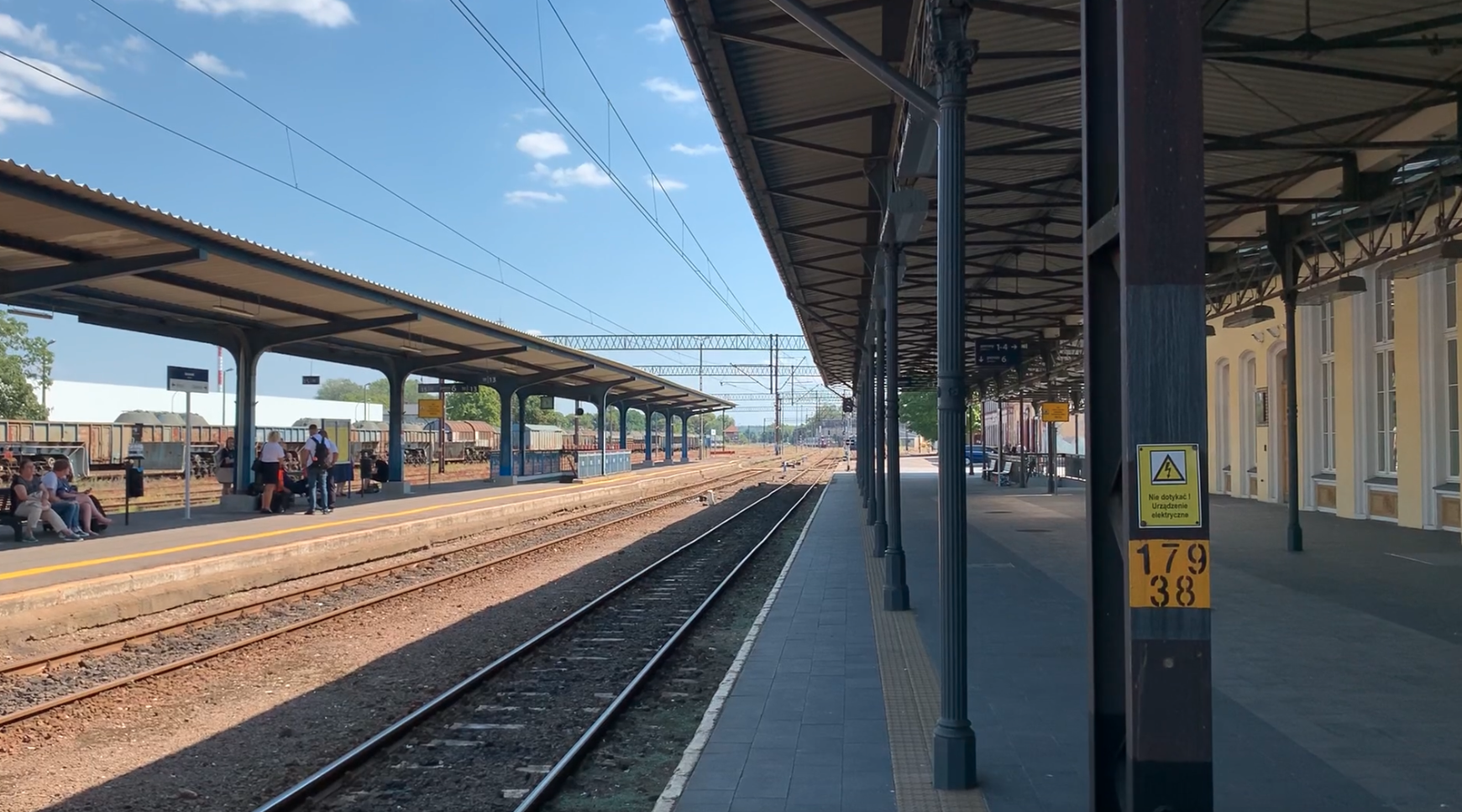
Leave a Reply
You must be logged in to post a comment.